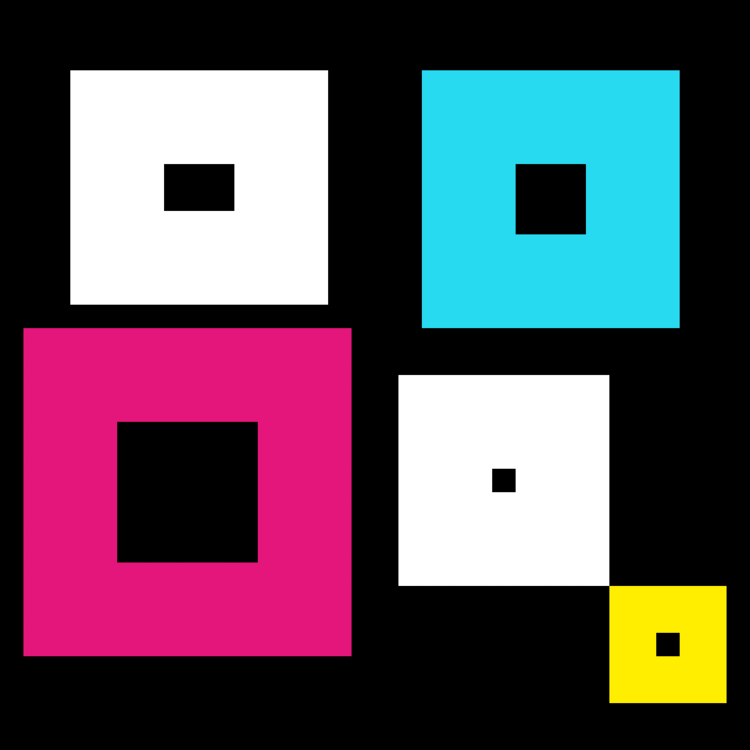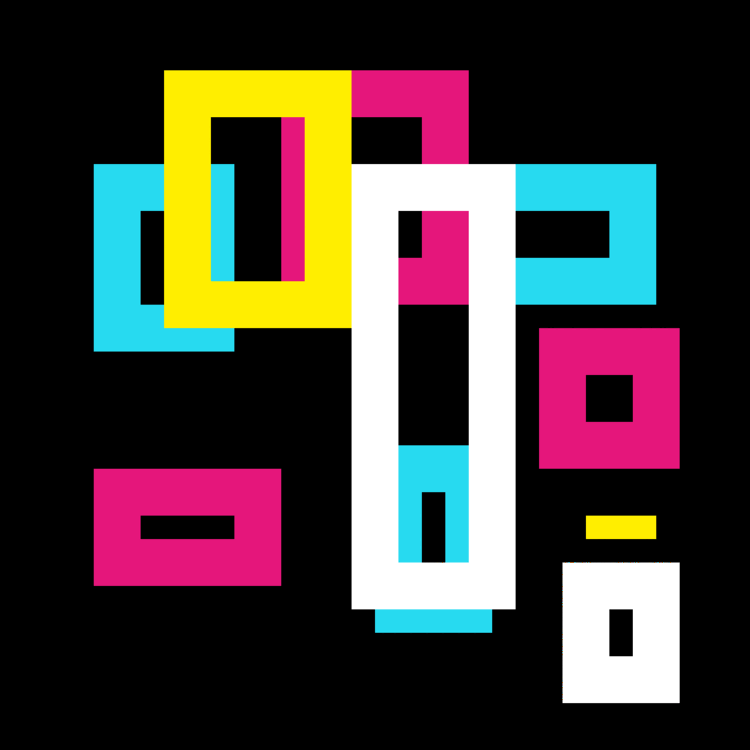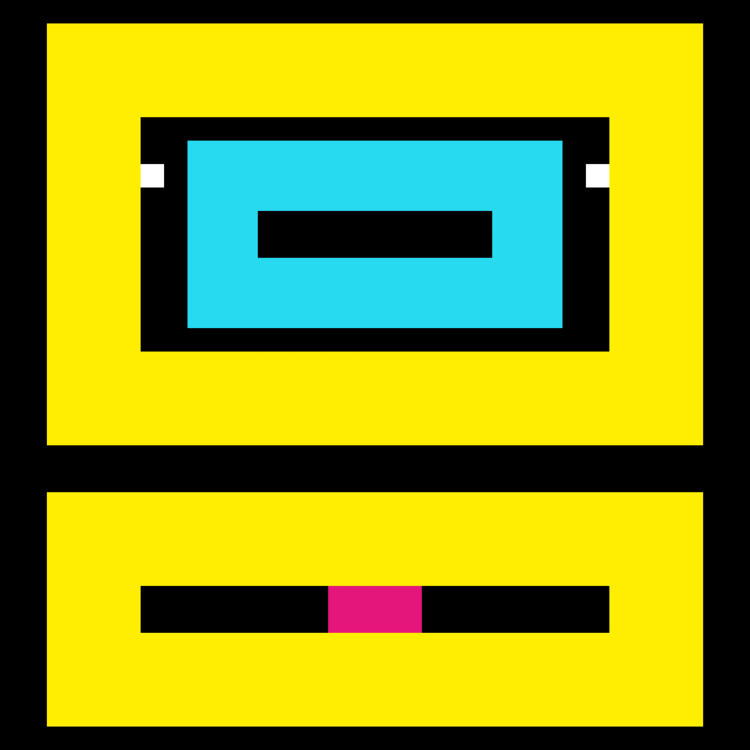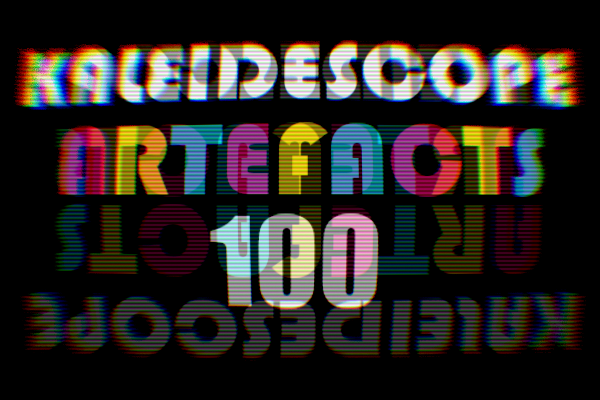Having been DM’d quite a few times by collectors since the release of the Kaleidescope Artefacts series, I’ve decided to answer as many of their question as I can in this article. I’ll cover the inspiration for the series, the process, the rules I followed when creating the art, and also try to explain as far as possible which pieces are likely to be more rare.
*Warning — This article contains images with flashing lights*

(This article was originally posted to Medium in March, 2021)
The Inspiration
I’ve been a fan of generative art for a while and a collector of it more recently — although for years I was a bit ambivalent about the field, if I’m being honest.
My mind was changed several years ago when I came across a generative piece that was truly beautiful, which led me to the time honored question, ‘What is art?’ Due to generative art, I came up with my own answer that at least satisfies me, ‘Art is anything created with the intention of it being art, and anything subjectively interpreted as art, bar nothing.’
But where does this leave ‘by-hand’ artists like myself, when after the software has been created, a generative artist can produce hundreds if not thousands of pieces in short order? It was then that I asked myself an admittedly strange question, ‘what would a human generative art project look like?’ Now, you might say, ‘well, surely that’s just any art work created by hand’. But not in my opinion, because that misses one major point, ‘the numbers’.
The Concept
I decided that I would be my own generative “computer”, with my subconscious as the software — so to speak — and create 100 pieces of work in a relatively short space of time. But how?
Having to draw still life at college proved quite dull, sheep’s skulls, pieces of wood, the odd rock etc. are not the most stimulating of subjects. This did lead to an interesting phenomena though, that of drawing for twenty minutes while chatting with my classmates around me, and then suddenly remembering I’d been drawing something all along.
I was always pleasantly surprised by the results when I looked down, it was like seeing my drawing for the first time. The conscious mind had switched off, and the subconscious that had already been trained with technique & practice, took over. Many artists have had this experience, and this faculty was what I wanted to harness in this project.
The Rules
Only my four exact CMYK Hex color codes for the pieces were to be used
Only four different pixel widths were to be used
Only four animated frames for each individual piece were to be used
Only four sided shapes were to be used
Analytical thought was to be ignored in favor of an impressionistic flow
All pieces would be chronologically ordered as they’d been created
Nothing could be changed or altered of the structure/color of a piece, no matter if I disliked it or not
The only decision I was to be allowed, was deciding the frame rate of the animation (I regard this as the equivalent of a generative artist allowing themselves ‘not’ to release some of the horrors that are undoubtedly sometimes created.)
The Rule Breaker
I will admit something to you though, I broke the rules twice (for I am human). One piece was beyond what I could accept (a travesty of form and animation that I deleted), this broke the last rule of ‘nothing could be changed or altered’.
The only other rule broken, was that of only having four frames of animation for each piece, throughout. On piece #100, I allowed myself the small luxury of adding one extra frame… In truth, this happened by accident and looked so good I decided to keep it. It seemed fitting for the final piece… again, I’m human.

(The artist/collector @Magall_art owned №100, the only 5 framed piece in the series but I bought it back from him some time ago. Other Kaleidescope Artefact pieces in a Voxels metaverse gallery space he’s dedicated to the series are here: https://www.cryptovoxels.com/play?coords=SW@723W,586S )
The Question of Rarity

One of the most popular questions I’ve been getting is that of, ‘Which one should I get, which one is the most unique or rare?’ This question is understandable, but also difficult to answer because everyone has different criteria/taste. But, I will try and answer it as best as I can, but first I’ll give you an example of why things are so subjective…
The artist and collector @AtomicHeroes happened to ask me which one was my personal favorite, and so I told him, it’s No.22.
Confused, he asked me, why? I told him something along the lines of, ‘because it has both compositional and color balance, there is balance also between the form and void (the empty space around it and within the gaps). Not only that, but it has the appearance of layering (I’ll talk more about layering later).
Features of Rarity
First of all, I should point out that they are all unique, they are all 1 of 1’s and no two are the same (yes, I checked, even though statistically the possibility of any two being the same is astronomical).
1. Background Colors

Here’s a thing… the pieces were all supposed to have a black background. I clicked the paintbucket on the wrong color and ended up with a Cyan background for №4. Unsure of what to do, I then went with my rule of not being able to change things once they’d been created.
As I proceeded with the pieces over block periods of hours, it happened again, and more frequently than I would have personally liked. And so it stands.
Here’s the breakdown of background colors:
66 pieces with a black background
11 with a Cyan background
10 with a white background
8 with a magenta background
and 5 with a yellow background
2. Color Anomalies
One thing I hadn’t expected, was that there would be colors visible other than my CMYK colors. This was due to fast frame rates that resulted in a kind of real-time color mixing. It was a happy discovery.
I’ve counted 22 pieces with color anomalies (you might be able to find more) which logically makes them rarer than the other 78, at least in regards to the aspect of color.
Colors Observed:
Navy blue
Muted sky blue
Amber
Coral
Here is an example of №8, with the coral color anomaly within the center:

3. Layering — Extra Dimensional Effects
I call layering a form of extra-dimensional value that doesn’t exist until the piece is animated. It brings depth to a piece — no more just the flat 2D animation/image, instead they come to life. Layering gives the impression that the structure goes 2 or 3 layers deep, and in some cases, 5 layers deep. My favorite piece №22 displays layering, and so does №31 given below as an example which appears to go at least 3 layers deep.

Personally – for me – I would aesthetically regard a piece as more desirable with layering. Again, this is where subjectivity and personal taste can skew opinions very differently.
4. Frame Rate

All pieces have a frame rate of between 7 to 24 frames per second. As I created them, this was the part that for me personally, would define them. I found I tended towards the faster frame rates, so the majority of the works are between 21 frames per second to 24 frames per second.
14 to 20 frames per second formed the second majority, but the minority — and so rarest— were between 7 to 13 frames per second (in fact, none were created between 10 to 13 fps).
A collector asked me the other day which one was the fastest and which one was the slowest. I told him that there was no single fastest one — as many hit 24 frames per second. But there was a slowest at 7fps, №43 pictured above.
5. Aesthetics and Structuring

I randomly used four different pixel widths throughout and mostly combined the widths within each piece, but often times, I’d end up with what I called ‘a big fat one’. And for me, they were some of my favorites.
Pictured left is №91 an example of which I myself have ended up calling ‘Yellow Masquerade’, simply because it’s so yellow it seems to be trying to pass itself off as one of the yellow background pieces.
On the opposite end of the spectrum though, was this mostly single pixel width piece, №45 owned by @AtomicHeroes :

On a few occasions, pieces came along of an entirely different form, with some even reminding people of real world things. More surprisingly, some acquired names, as with №77 also owned by @AtomicHeroes that he refers to as ‘A Starlit Sky’.

№73 owned by artist @DanielKeoghArt also displays a very unique structuring within the series, and had been referred to as ‘The Stairs’, which for me then conjures up the image of one of Escher’s drawings of never ending and impossible staircases:

The Takeaways:
The most rare background colors are Yellow and Magenta, followed by White and Cyan
Only approx 22 pieces display color anomalies
The largest pixel width pieces are more uncommon, as the larger pixel width had the effect of leaving no space to add anything else, and randomizing of habit usually led me to a wider range of pixel widths
The slower the frames per second on a piece, the rarer
More layering, more rare
Recognizable structures are uncommon, as most pieces tend to appear purely abstract
To Sum Up
This was a very interesting art series to create that surprised me on many levels. I’m so used to carefully making every single decision and choice in all my previous work, that doing animated abstracts this way was very freeing and creatively rewarding.
